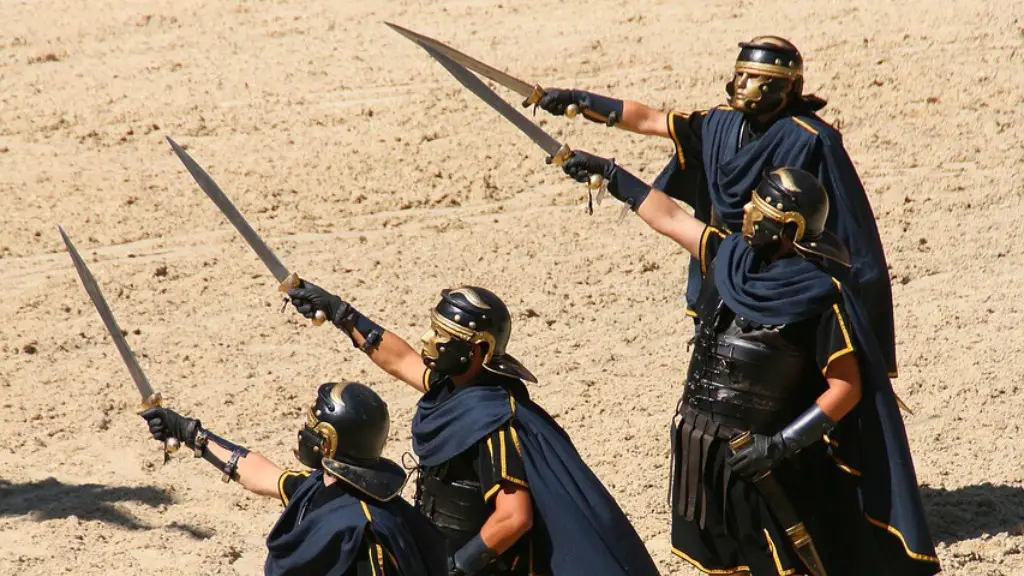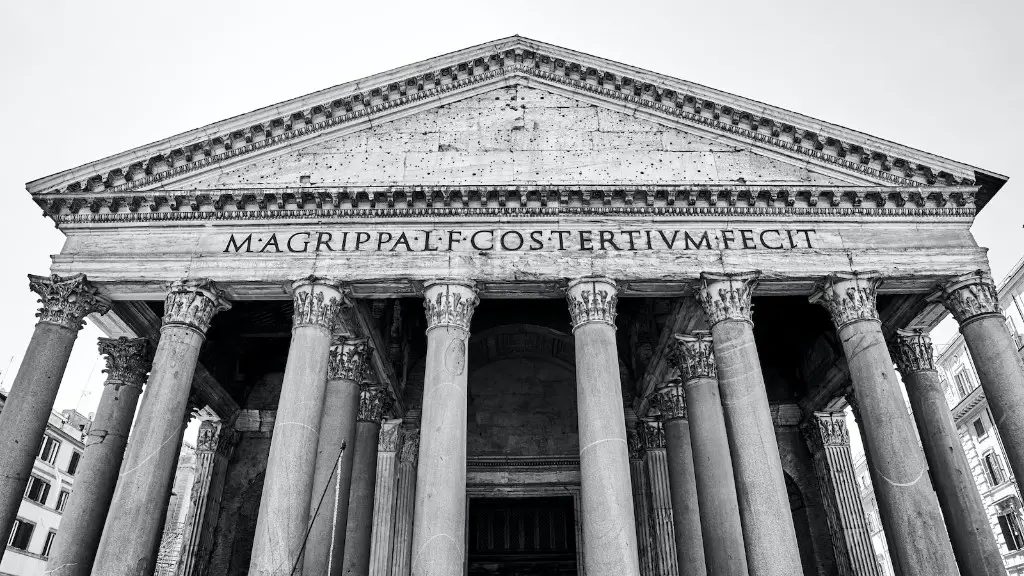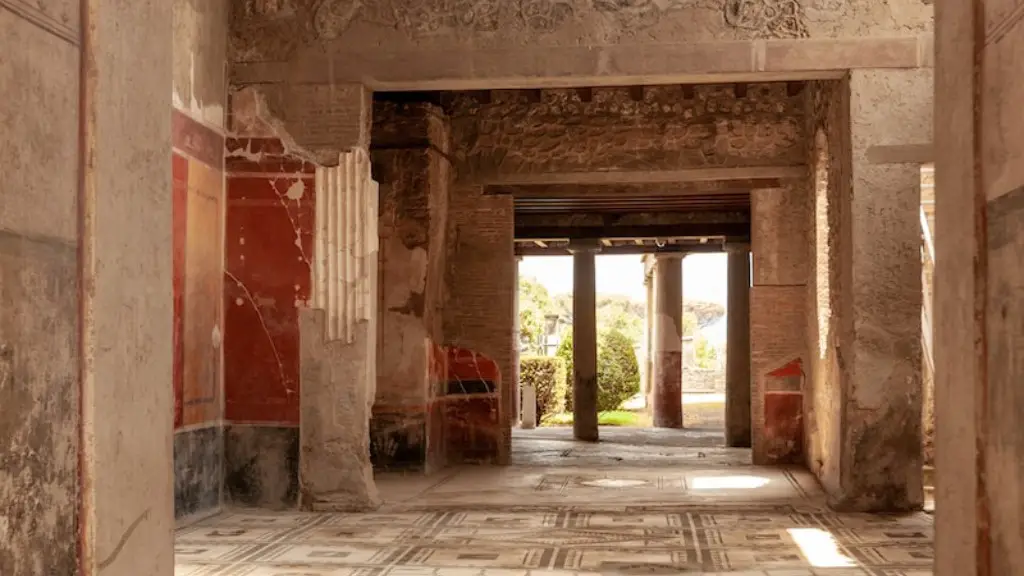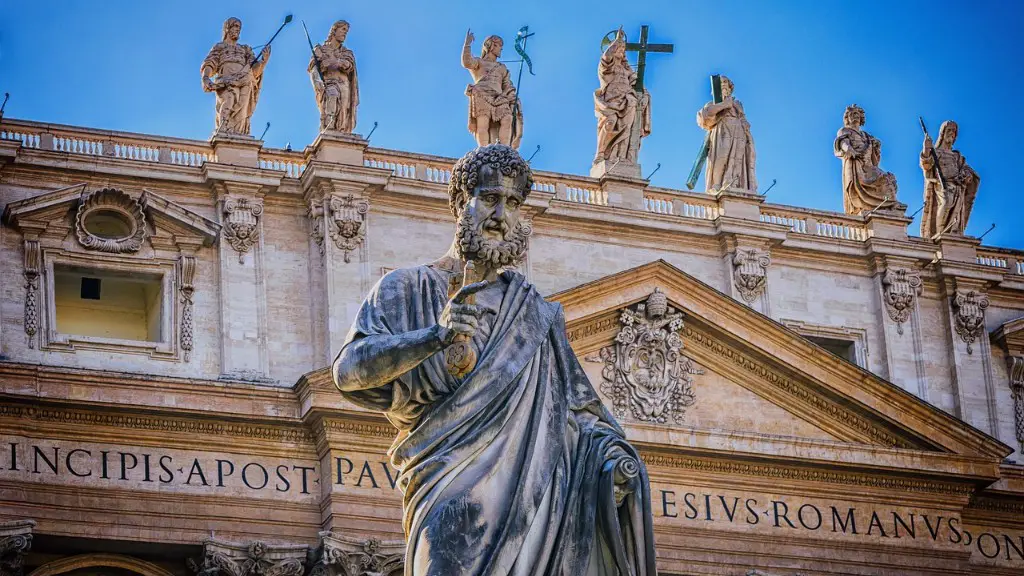Food is an important part of culture and the quality and variety of the food people eat can be an indication of civilization. Ancient Rome is renowned for its culinary influences on modern cuisine, with many traditional recipes still popular today. Roman society was built upon the importance of good food and meals for socializing were considered an essential part of life. Romans had a reputation for being gluttonous and enjoyed a range of different dishes.
Legumes were a popular staple in Ancient Rome, such as beans and lentils. Wheat, rye, spelt and barley were eaten in bread, as well as crushed and seasoned with salt, oil, cheese and herbs. A simple meal might include plain bread, olives, capers, onions, leeks and garlic which would be seasoned with oil, vinegar, oregano and mint. Fruits such as apples, pears, plums, peaches and apricots were widely eaten.
Meat dishes were expensive and often reserved for special occasions or the upper classes. Fish was eaten fresh, dried or salted, particularly in coastal areas. Pork, beef, lamb and wild game were all popular, however chickens were rarely eaten as they were thought of as being unlucky. The Romans also ate exotic animals such as peacocks, ostriches, hyenas and hares.
Cheese was widely consumed and varied in quality depending on where it came from. Ricotta and mozzarella were among the most popular types. Dairy products were also available such as eggs, butter and cream. Romans ate a variety of fruits, nuts and seeds including olives, almonds, hazelnuts, walnuts, pine nuts and chestnuts.
Vegetables were a common addition to any meal. Asparagus, cabbage, carrots and onions were popular as well as lettuce, parsley and endive. Mushrooms were also a part of Roman cuisine and extensively used in dishes. Herbs and spices were used to flavor dishes, such as thyme, pepper, cumin, anise, bay leaves and dill.
Preserves and Pickles
Preserves and pickles were used to enhance flavors and give meals an extra kick. Salt-cured meats such as Speck and salami, as well as fish and anchovies were popular. Garum, a fermented fish sauce, was used for flavoring dishes. Honey and vinegar were used in sauces, as well as fruit juices.
Roman cuisine was quite complex, with meals served in courses. A typical meal might include appetizers, salads, main courses and desserts. Bread and wine were important elements and offerings were usually made to the gods before meals. Social gatherings and dining out were popular, with meals typically enjoyed in the city’s wealthy homes or public amenities.
Feasts and Banquets
Feasts and banquets were important elements of Ancient Roman meals. Wealthy Romans threw lavish feasts for their friends, family and neighbors. The most extravagant of these were called symposia and would involve a variety of food and drinks and entertainment.
These feasts were often more about showing off wealth and power than about enjoying the food. Diners would compete to be seen as the most generous givers, with some attendees preparing dishes from their own kitchens to demonstrate their wealth.
The idea of these feasts was not to cause gluttony, but to socialize, demonstrate respect and power, and enjoy fine-tasting food and wine. Guests ate a variety of dishes while reclining on couches, after which, entertainment was provided to the diners. The excesses of these feasts became so exaggerated that Emperor Augustus had to intervene and impose legislation to curb their expenditure.
Regional Dishes and Differences
Regional differences existed among the food that was eaten in Ancient Rome. In the Northern parts of the Empire, oat-based dishes were popular, while the South enjoyed vegetable-based dishes. Seafood was abundant in the coastal regions, while inland regions relied heavily on game and mutton. Fruit preserves were commonly used throughout the empire, but some areas favoured salt-curing and pickling over preservation.
In ancient Rome, what one ate was as much about social status and power as it was about taste. It was not uncommon for wealthy Romans to eat with gold cutlery and crystal goblets, while the general population would make do with simple wooden spoons and dishes. However, whether wealthy or poor, Ancient Romans enjoyed varied and abundant meals of cereals, vegetables, fruits, nuts, pickles and salted meats, with an emphasis on freshness and the use of herbs and spices.
Cooking Techniques
Cooking techniques played an important role in Ancient Roman cuisine. Romans used simple methods such as roasting, boiling, grilling and baking with wood-fired ovens. Food was generally cooked over an open fire, but some meals were cooked in clay ovens or slow-cooked in a tagine.
Simplicity was key and recipes were generally made with simple ingredients. Spices were used to enhance flavors and food was often served with sauces. Romans preferred their food cooked well done, as raw dishes were generally seen as unappealing.
Dining Habits of Ancient Rome
Just like today, dining habits were very important to the Ancient Romans. It is well documented that Romans used their hands to eat and would rarely use utensils. This was considered the most natural way to consume food and was seen as an extension of the family. The brotherhood and affection of family meals in Ancient Rome was geared towards providing a sense of togetherness.
In addition to eating with their hands, Romans also believed that one should never consume more than one course per meal. Furthermore, beverages were only served after the main course. The Ancient Romans also had a strong belief that food should always be consumed in moderation and that overeating was to be avoided at all costs.
Food Sociology and Spirituality
Food was seen as a way to bring people together, provide social interactions and strengthen family bonds. In Ancient Rome, there was a strong belief that food was more than just sustenance, but was also an important part of spirituality. Food was offered to the gods during rituals and festivals as a way to honor them.
Ancient Romans also believed that health and well-being could be maintained and improved by eating the right foods. There was a strong emphasis on consuming fresh fruits, vegetables and grains, and avoiding overly processed and cooked food. This belief was furthered by the fact that many Roman writings warned against consuming excess wine, other alcoholic drinks and excessively rich foods.
Conclusion of Ancient Roman Cuisine
Ancient Roman cuisine was a fascinating mix of simplicity and complexity, with an emphasis on freshness, health, moderation and honoring the gods. Traditional Roman dishes were often simple, made with mostly local ingredients, with flavor and complexity coming from a variety of herbs and spices. However, wealthier Romans enjoyed elaborate feasts and banquets, demonstrating their status and power.
Food was an important part of society for Ancient Romans and mealtimes were seen as an opportunity for gathering and fellowship. Food was also seen as an important part of spirituality and the Ancient Romans believed that food offered to the gods was a way to honor them. Even though Ancient Roman cuisine has changed significantly over the centuries, its influence on modern cooking has been significant and many traditional recipes still remain popular today.





